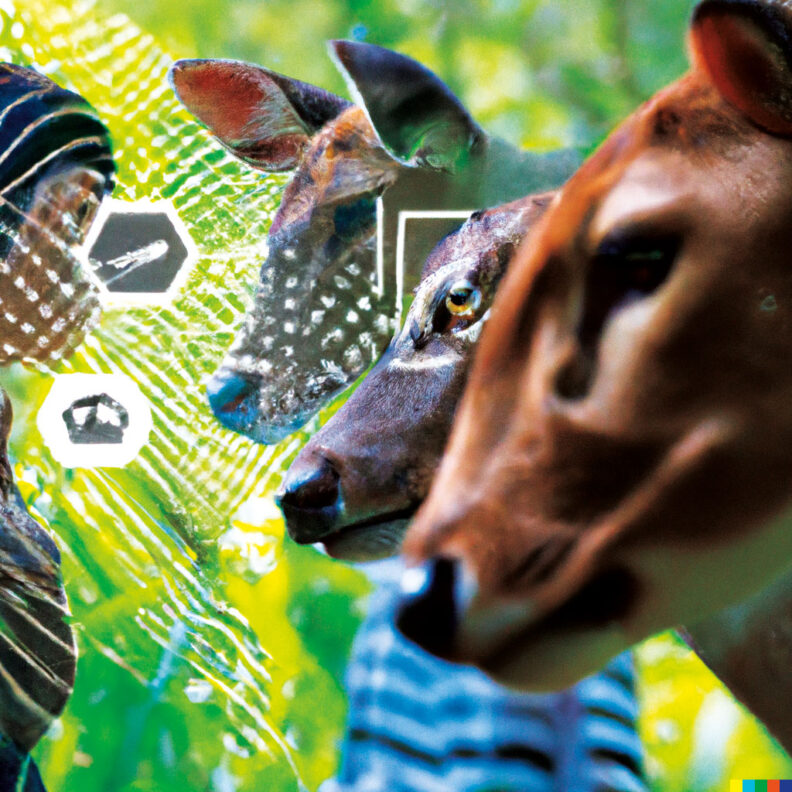AI For Wildlife Conservation: A Balancing Act

Table of Contents
AI-Powered Tools for Combating Poaching
Poaching remains a significant threat to numerous endangered species, driving many towards extinction. AI offers a technological arsenal to combat this illegal activity.
Real-time Monitoring and Detection
AI-powered surveillance systems are revolutionizing anti-poaching efforts:
- Drone Surveillance: Drones equipped with advanced AI-powered image recognition can patrol vast protected areas, identifying poachers in real-time. The AI algorithms can differentiate between humans and animals, minimizing false alarms and allowing for rapid response by park rangers.
- Acoustic Monitoring: Sophisticated algorithms analyze acoustic data, pinpointing the location of gunshots or other sounds associated with poaching activities. This allows for quicker intervention and potentially prevents poaching incidents before they occur.
- Predictive Policing: By analyzing historical poaching data, environmental factors (such as rainfall patterns or vegetation density), and movement patterns of both poachers and animals, AI can predict poaching hotspots. This enables the strategic deployment of anti-poaching resources, maximizing their effectiveness.
Advanced Analytics for Investigating Poaching Crimes
AI goes beyond real-time detection; it offers sophisticated analytical tools for investigating poaching crimes:
- Network Analysis: AI algorithms can analyze complex datasets—including poaching incident reports, seized contraband, and communication records—to identify poaching networks and their key players. This helps disrupt organized crime involved in wildlife trafficking.
- Facial Recognition: AI-powered facial recognition technology, when ethically applied and with appropriate legal safeguards, can identify poachers from surveillance footage, aiding in apprehension and prosecution.
- Predictive Modeling: AI can develop predictive models to anticipate poaching attempts based on various factors. This allows for proactive measures to deter poaching and protect vulnerable wildlife populations.
AI for Habitat Monitoring and Biodiversity Assessment
Understanding and protecting wildlife habitats is crucial for conservation. AI significantly enhances our capacity for habitat monitoring and biodiversity assessment:
Satellite Imagery Analysis
AI transforms the analysis of satellite imagery, enabling:
- Deforestation Detection: AI algorithms can rapidly identify deforestation, habitat fragmentation, and other environmental changes that negatively affect wildlife. This allows for timely interventions to mitigate damage.
- Vegetation Monitoring: Changes in vegetation patterns, often early indicators of environmental stress, are easily detected using AI, providing valuable insights into the health of ecosystems.
- Habitat Mapping: AI can create detailed and accurate maps of wildlife habitats, informing effective conservation strategies and land management decisions.
Camera Trap Data Analysis
Camera traps provide valuable data on wildlife populations and behavior. AI dramatically accelerates the analysis of this data:
- Automated Species Identification: AI can automatically identify and classify animals captured in camera trap images, saving researchers countless hours of manual work.
- Population Estimation: AI-powered image recognition facilitates accurate population size estimations and species distribution mapping.
- Behavioral Analysis: AI can detect subtle changes in animal behavior, alerting researchers to potential environmental stressors or disease outbreaks.
Ethical Considerations and Challenges in Implementing AI for Wildlife Conservation
While AI offers immense potential, its application in wildlife conservation must be approached with caution:
Data Privacy and Security
The vast amounts of data collected through AI-powered monitoring systems require robust security measures:
- Data Protection: Sensitive data must be protected from unauthorized access and misuse, complying with relevant privacy regulations.
- Data Sharing: Responsible data sharing and collaboration protocols are crucial amongst conservation organizations to maximize the value of the data while maintaining security.
- Algorithmic Bias: AI algorithms must be carefully designed and tested to avoid biases that could disproportionately affect certain species or populations.
Potential for Unintended Consequences
Careful consideration of potential negative impacts is crucial:
- Ecosystem Disruption: AI systems must be designed to minimize the risk of unintentionally harming wildlife or disrupting ecosystems.
- Long-Term Effects: The long-term effects of AI-based interventions on wildlife behavior and population dynamics need thorough evaluation.
- Transparency and Accountability: Transparency and accountability mechanisms are essential to ensure responsible development and deployment of AI technologies in conservation.
The Future of AI in Wildlife Conservation
The future holds exciting possibilities for AI's role in wildlife conservation:
- Advanced AI Techniques: Advanced techniques like deep learning and reinforcement learning promise further advancements in conservation tools.
- Adaptive AI Systems: Developing more robust and ethical AI systems adaptable to diverse ecological contexts is crucial.
- Collaboration and Innovation: Collaboration between AI researchers, conservation biologists, and policymakers is key to ensuring responsible innovation.
Conclusion
AI offers transformative potential for wildlife conservation, providing powerful tools to combat poaching, monitor habitats, and assess biodiversity. However, responsible implementation requires careful consideration of ethical implications and potential risks. By prioritizing transparency, accountability, and rigorous testing, we can harness the power of AI to safeguard vulnerable species and protect biodiversity for future generations. The future of wildlife conservation hinges on our ability to navigate this balancing act, ensuring that AI serves as a force for good in preserving our planet's precious natural heritage. Let's embrace the innovative power of AI for wildlife conservation, but always with a keen eye on ethical considerations. The effective and ethical use of AI in wildlife conservation is not just an option—it’s a necessity for the survival of many species.

Featured Posts
-
 Le Pitch Hipli Emballage Reutilisable Et Durable
Apr 23, 2025
Le Pitch Hipli Emballage Reutilisable Et Durable
Apr 23, 2025 -
 Anchor Brewings Closure Whats Next For San Franciscos Iconic Brewery
Apr 23, 2025
Anchor Brewings Closure Whats Next For San Franciscos Iconic Brewery
Apr 23, 2025 -
 Royals Powerful 11 1 Win Against Brewers
Apr 23, 2025
Royals Powerful 11 1 Win Against Brewers
Apr 23, 2025 -
 Back From Surgery Christian Yelichs Long Awaited Home Run
Apr 23, 2025
Back From Surgery Christian Yelichs Long Awaited Home Run
Apr 23, 2025 -
 Milwaukee Brewers 2024 Two Departures To Mourn Two To Forget
Apr 23, 2025
Milwaukee Brewers 2024 Two Departures To Mourn Two To Forget
Apr 23, 2025
